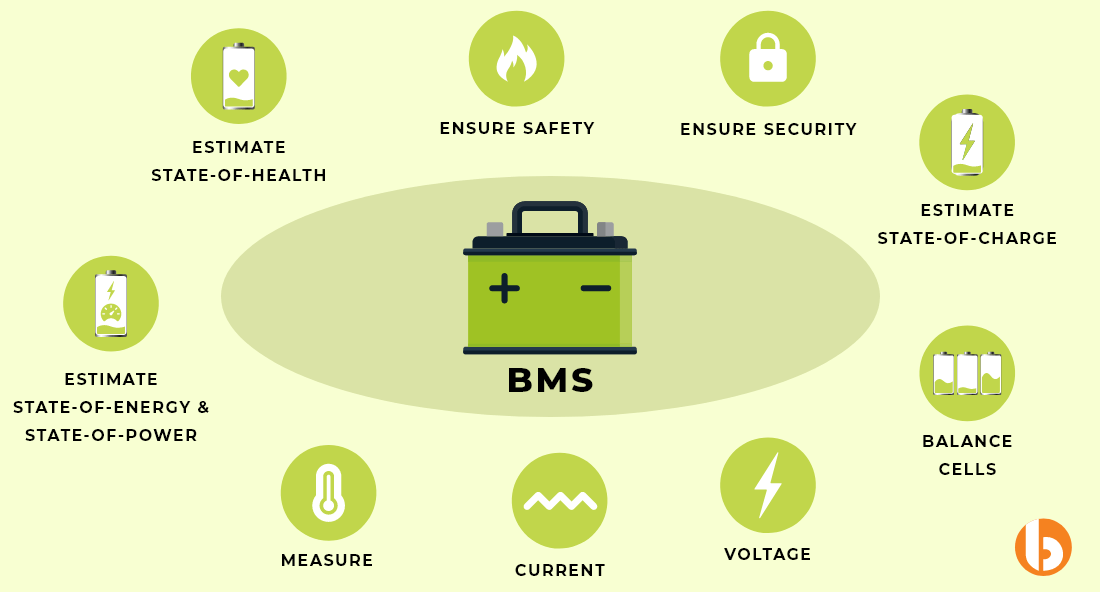Quick Summary:
A battery management system is the brain behind the battery pack. The primary role of BMS is to take decisions in the interest of the safety and security of the battery pack. These include current and voltage control, fire protection, thermal management solutions, and cybersecurity. In this blog post, we will discuss the potential hazards that can be detrimental to the battery’s life cycle and BMS’s role in the safety and security of battery pack.
Table of Contents
Introduction
The global mobility segment is undergoing a once-in-a-century transformation. The picture looks similar to Halley’s comet, with the observations and findings that have moved past the initial stage. The fortune business insight report projects the size of global electric mobility, which was 230.12 billion in 2020. The market is expected to rise from 279.45 billion in 2021 to USD 1507.21 billion in 2028 at a 27.2% CAGR. Electrification of the automotive is driven by the top 3 factors, i.e., environment, regulation, and consumer behavior, causing the rapid EV adoption.
An electric vehicle is constituted of 3 core components. These include the electric motor for transmission, battery for energy storage, and the battery management system responsible for coordination, control, and safety and security of battery pack.
The battery management system not only acts as the central unit in command but also enhances the battery pack’s performance so that maximum charge and efficiency are achieved within every charge cycle. This is achieved through determining the accurate state of charge and state of health along with passive cell balancing of the battery energy storage system.
The lithium-ion batteries are potentially sensitive to the environment and sometimes human factors. Exceeding its operational limits may result in catastrophes such as fire or an explosion in the worst-case scenario. Equipped with multiple modules, fuses, and sensors, a BMS can run through predictive analysis to protect both the battery pack and the EV driver.
Let’s go through the key parameters around which a battery management system is designed in the interest of battery safety and security.
Your battery pack is crucial
Bacancy’s most reliable advanced battery management system for Ebikes, e-rickshaws, and 4-wheelers is transforming the EV game by driving rapid EV adoption. Book your BMS today!

3 Ways to Enhance Safety and Security of Battery Pack
The most common BMS duties concerning battery safety and security are thermal management solutions, fire protection, cybersecurity, voltage, and current control. I am going to cover 3 most essential hazards that cross a battery’s path and how BMS can help you overcome them.
1. Current and Voltage Regulation
The battery’s current and voltage regulation is done in 2 ways. The first is to carry out overcurrent and voltage protection during charging and prevent the battery from completely discharging, combating the Undervoltage scenario.
The potential implication of going above and beyond the operating limits can cause malfunctioning of the circuit due to oxidation and sometimes lead to a short circuit. This can also shatter the battery life completely, deteriorating the life span, and may sometimes result in hazards such as fire or explosion.
Role of BMS: The battery management system is armed with multiple sensors to assess the situation inside the battery pack to decide further steps. When the voltage or current is beyond the limit, the BMS will simply disconnect the circuit and prevent it from further charging, until the user prompts the action.
A smart BMS can track the real-time operating condition of the battery pack and send a notification to the manufacturer or user’s device to trigger an alarm notification.
2. Thermal Management
One of the most crucial aspects to be taken care of while designing the battery management system is the safety and security of battery pack. The battery’s temperature coefficient and activities like heating and cooling determine the thermal management system of the energy storage system.
Even though lithium batteries have high efficiency, it is essential to note that the highly reactive Li-ion batteries can result in a devastating situation within the blink of an eye. Slight damage in the battery can cause a short circuit or a thermal runaway leading to an explosion or fire.
Role of BMS: A battery management system is equipped with thermistors to monitor the temperature coefficient within the operating range. When the BMS detects any deviation in temperature, it automatically does what is necessary for battery safety and security. It may cut off the charging supply in some cases.
A smart battery management system can send fault notifications to the manufacturer/driver with the real-time location of the device and the temperature status inside the battery pack.
3. Fire Protection
The hardest and most hidden threat of the battery pack is fire. No manufacturer or EV driver would ever think about their battery energy storage systems catching fire. This type of catastrophe may sometimes arise from sparking or burning due to the manufacturing defects such as internal short circuits.
Role of BMS: One of the best ways to cut through the fire hazard is the installation of smoke detectors inside the battery pack. Additionally, having a cell-cooling system can protect the battery in the most probable ways with the control leveraged to the BMS to activate/deactivate the cooling systems.
Attain the highest battery productivity with the assurance of safety
Get in touch with the top BMS manufacturers in India to facilitate a real-time operating system with a cloud-enabled feature to monitor and track the device remotely.

Conclusion
The deviations from the operating range of the battery can result in hazardous and unpredictable effects on the battery pack and the EV driver. Moreover, it damages the reputation of the battery manufacturer and creates a bad impression in the minds of potential EV users.
The lithium-ion battery is one of the most vulnerable battery types in the sense that any voltage, current, temperature, or short circuit fluctuation can lead to a catastrophe. The most viable way to enforce the safety and security of battery packs is via integration with the battery management system.
BMS can safeguard the battery pack from a wide range of potential threats such as overcurrent, instantaneous ignition, temperature, and voltage fluctuations. By now, you would have been able to analyze the role of BMS in terms of battery safety and security, and performance improvement. Bacancy’s smart BMS is India’s most trusted solution for electric cars, scooters, e-bikes, and rickshaws.
Bacancy’s extended venture Bacancy Systems, is at the forefront of Product Engineering, design, and development. Bacancy Systems is catering to the E-mobility industry by delivering cutting-edge solutions to create future-ready products, such as the battery management system, motor controller, and CCS2 controller.
Your Success Is Guaranteed !
We accelerate the release of digital product and guaranteed their success
We Use Slack, Jira & GitHub for Accurate Deployment and Effective Communication.



